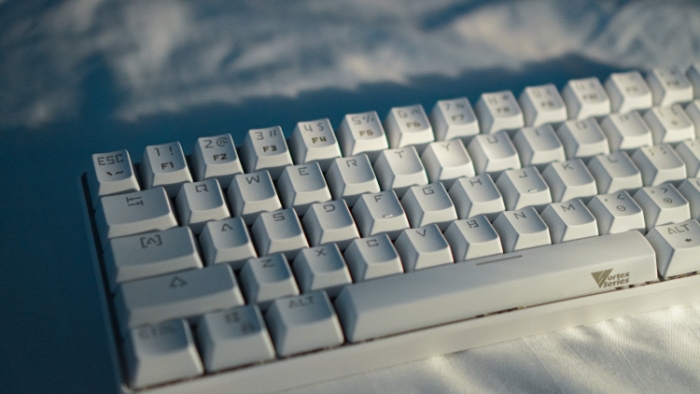Why Keyboards Aren’t Alphabetical

Keyboard layouts, particularly the ubiquitous QWERTY design, often stir curiosity and sometimes even skepticism. Why isn’t the keyboard set up in a simple A-Z fashion, as one might expect? This layout, now familiar to millions across the globe, has a unique history rooted in mechanical innovation, user familiarity, and a pinch of sheer happenstance.
As we delve into the story behind the keys, we’ll uncover the reasons for this non-alphabetical arrangement and how it has withstood the test of time. Join us on this journey of keystrokes and characters to explore why the letters under our fingertips are positioned just so.
The Early Typewriter Days
Before the advent of the modern keyboard, there was the typewriter. Conceived in the early 19th century, typewriters aimed to make the process of writing faster and more efficient.
While several inventors raced to create the most efficient machine, it was the Sholes and Glidden typewriter that introduced the world to the QWERTY layout we recognize today.
The First Stabs at Layout Design
As prototypes took shape, a straightforward alphabetical arrangement seemed the obvious choice. This layout was indeed attempted in the earliest models.
However, practical challenges soon became evident, necessitating a change.
The Problem of Jamming
One of the most significant issues with early typewriters was “jamming.” When two neighboring keys were pressed in rapid succession, their typebars would clash, leading to interruptions and errors in typing.
This flaw was not just inconvenient but threatened the viability of the entire typewriter concept.
Birth of the QWERTY Layout
Christopher Latham Sholes, one of the primary developers of the Sholes and Glidden typewriter, sought a solution. By rearranging the letters to separate frequently used combinations, the incidence of jamming significantly decreased.
This new design, although seemingly random, had a deliberate rationale: to optimize typing while preventing mechanical failures.
Public Reception and Spread
The QWERTY design, introduced in the Sholes and Glidden typewriter – often branded as the Remington No. 1 when sold – became a hit.
As the first commercially successful typewriter, its layout naturally set a precedent. Subsequent typewriters adopted this layout, cementing QWERTY’s place in typewriting history.
Mechanical Constraints
In the intricate dance of design and functionality, the mechanical constraints of early typewriters played a pivotal role in shaping the keyboards we use today.
The Mechanics of Early Typewriters
At the heart of the typewriter’s design were its typebars, the levers that carried each character to strike the inked ribbon and make an impression on paper. Each key on the typewriter corresponded to a specific typebar, which would swing up and strike when pressed.
Confronting the Jamming Dilemma
One significant hurdle that early typewriter inventors faced was the problem of jamming. When two typebars situated close to each other were pressed in quick succession, they often clashed or got stuck, causing a disruption in typing.
This wasn’t merely an inconvenience; it was a fundamental flaw that threatened the practicality of the typewriter as a writing instrument.
Optimizing for Performance
To mitigate the jamming issue, a layout that reduced the chances of adjacent typebars being struck in rapid succession was crucial. The QWERTY layout achieved this by strategically placing frequently used letters apart from each other.
While it might have seemed counterintuitive to separate common letter pairs, this design helped ensure that the typebars had minimal interference with each other, thus promoting smoother operation.
Balancing Speed and Reliability
The primary objective of the QWERTY layout wasn’t to speed up typing, as is often assumed. Instead, it aimed to balance typing speed with the mechanical constraints of the typewriter.
By preventing jams, typists could maintain a steady pace without constant interruptions, leading to overall efficiency.
Enduring Legacy of Mechanical Limitations
The mechanical issues of early typewriters have long been resolved, especially with the transition to digital keyboards. Yet, the layout designed to combat those very issues remains predominant.
This stands as a testament to how initial design solutions, even those born out of specific constraints, can have lasting impacts far beyond their original context.
Transition from Typewriters to Computers

As the 20th century progressed, the world stood on the brink of a technological revolution. Computers, initially colossal machines with niche applications, started becoming more accessible and began reshaping the landscape of everyday work.
With this shift, the tools for inputting information also needed an update.
Maintaining the QWERTY Consistency
When computer keyboards were introduced, it would have been a prime opportunity to reconsider the QWERTY layout. However, due to decades of typists being trained in this system, it was far more pragmatic to maintain the familiar layout.
By keeping the QWERTY design, it ensured a seamless transition for typists moving from typewriters to computer keyboards, eliminating the need for retraining.
Benefits of Familiarity
For a user interface to be effective, it needs to be intuitive. The widespread familiarity with the QWERTY layout made it the default choice.
Introducing a radically different layout could have slowed the adoption of early computers, a risk that manufacturers weren’t willing to take. Instead, they banked on the ingrained habits of countless typists to drive rapid integration of computers into workplaces.
Addressing Digital Needs without Layout Overhaul
While the basic layout remained the same, computer keyboards introduced new keys and functionalities to address the requirements of digital operations. Keys such as ‘Enter’, ‘Ctrl’, ‘Alt’, and ‘Delete’ found their place alongside the traditional QWERTY characters, ensuring the keyboard evolved to meet the digital age’s unique demands.
Alternatives to QWERTY
While QWERTY reigns supreme in most parts of the world, numerous alternative layouts have been developed over the years. These alternatives, driven by different design philosophies and objectives, challenge the status quo and present options for those seeking optimized typing experiences.
Dvorak Simplified Keyboard: A Focus on Efficiency
Origins: Developed in the 1930s by Dr. August Dvorak and his brother-in-law Dr. William Dealey, the Dvorak Simplified Keyboard aimed to make typing more efficient and ergonomic.
Design Principles: This layout minimizes finger movement by placing the most frequently used letters and letter combinations under the strongest fingers and in the home row. This design claims to reduce fatigue and increase typing speed.
Adoption and Recognition: Despite its benefits, the Dvorak layout hasn’t been as widely adopted as QWERTY. However, it has a dedicated user base and is recognized in many operating systems, allowing users to switch to it easily.
Colemak: Balancing Familiarity and Optimization
Origins: Introduced in 2006 by Shai Coleman, Colemak represents a middle ground between QWERTY and Dvorak.
Design Principles: Colemak changes fewer keys from the QWERTY layout than Dvorak does, making the transition easier. It aims to offer a more efficient and comfortable typing experience while keeping many of the shortcut keys (like Ctrl + C/V/Z) in their familiar places.
Popularity: Due to its balance between familiarity and optimization, Colemak has gained a fair amount of traction among those looking for an alternative to QWERTY without the steep learning curve of Dvorak.
Workman: Addressing Horizontal Strain
Origins: Developed by OJ Bucao, the Workman layout arose from perceived flaws in other layouts regarding horizontal finger movement.
Design Principles: Workman prioritizes the reduction of horizontal finger movement, especially on the middle and ring fingers, aiming to further decrease strain.
Place in the Market: While not as popular as Dvorak or Colemak, Workman has its dedicated users, especially among those who prioritize ergonomics.
Others Worth Mentioning
Various other layouts have been proposed and used in niche contexts, including AZERTY (primarily in French-speaking regions), QWERTZ (used in Central Europe), and JCUKEN (found in Russian keyboards).
Conclusion: The Journey of Keys and Human Adaptability
From the dawn of typewriting technology to the digital age, the evolution of keyboard layouts encapsulates more than just a tale of design. It’s a testament to human ingenuity, adaptability, and our intricate relationship with tools.
The QWERTY layout, while originally devised to tackle the mechanical constraints of early typewriters, has managed to remain relevant, touching the lives of billions around the world. Its dominance is not merely a function of its design efficiency but also an illustration of societal inertia and the strength of learned behaviors.
However, as we’ve seen, the world of keyboard layouts is diverse and continually evolving. Alternatives like Dvorak and Colemak have carved out their own niches, advocating for optimization, comfort, and efficiency.
These alternatives remind us that there is no one-size-fits-all solution, and innovation is always on the horizon.
In an ever-evolving technological landscape, the keyboard stands as an emblem of both heritage and progress. As we type away, crafting messages, stories, and codes, it’s fascinating to ponder the history beneath our fingertips and the future possibilities that lie ahead.



